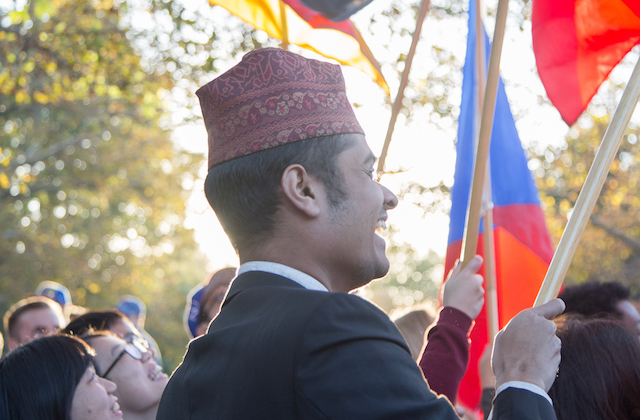How U.S. Universities Embrace Diversity and Culture

Diversity of Cultures in the U.S.
Is the United States a melting pot or a tossed salad of cultures and traditions? Many people may debate this topic, however, the key ingredients – many cultures from around the world – remain an essential element of what the U.S. is today. Diversity of cultures is celebrated broadly on college and university campuses across the United States. This country is often described as a nation of immigrants, who each came to this country seeking a better life, and our universities see great value in what international students and their languages, cultures, and traditions bring to the educational experience.
In the U.S., nationally recognized periods of time are set aside to commemorate the contributions of various cultures to our society almost every month of the year. African-American (Black) History Month (February), Women’s History Month (March), Asian-Pacific Heritage Month (May), Hispanic Heritage Month (Sept-Oct), American Indian Heritage Month (November) and many others are officially designated to celebrate the incredible diversity of the United States according to the Library of Congress site of Commemorative Observances. Universities are often key components of these cultural celebrations.
U.S. Universities Promote Culture and Diversity
U.S. universities increasingly talk about promoting diversity and culture by including these terms in their vision (e.g. Penn State), mission (e.g. University of Kansas), and values statements (e.g. American University).
Our colleagues at U.S. News Education wrote an important piece ten years ago that still rings true today about the importance of diversity at U.S. universities. Diverse cultures benefit students by increasing their worldliness, preparing them for future career success in the global workforce, expanding their creative thinking capacity, and much more.
Amy Neufeld, Managing Director of the Academic Accelerator Program at the Universtiy of Kansas, indicated that, “Diversity, equity, and inclusion is very important at KU because it enriches the experiences of the entire university community and prepares students to lead in a pluralistic society.”
Life on Campus
U.S. universities often have international-themed days or weeks that focus on educating the campus community about the different cultures, traditions, foods, and fashion represented by their students in exciting, fun-filled ways. Some include international floats in homecoming parades, host international coffee hours, and offer multicultural graduation events. Even rural communities that tend to be very homogenous in terms of their culture and population enjoy opportunities to interact with international students to learn what brings people together.
Embracing diverse cultures goes beyond the fun both inside and outside the classroom. Many universities now include a variety of internationally-oriented courses as required general education courses and/or regional history, politics, language classes and academic majors that students can take to broaden their knowledge of the work around them. At KU (University of Kansas), Neufeld shares that they offer a three-day retreat called, “Colors of KU, which builds leadership and organizational skills with an emphasis on diversity and multiculturalism.”
Of course, for all new students coming to the United States for study from overseas, universities offer international student organizations and clubs as an easy way to get connected and expand your horizons. So, as you develop your list of universities and colleges you are considering, be sure to ask those institutions about the kinds of clubs, activities, and courses they offer on various cultures, ethnicities, and traditions.